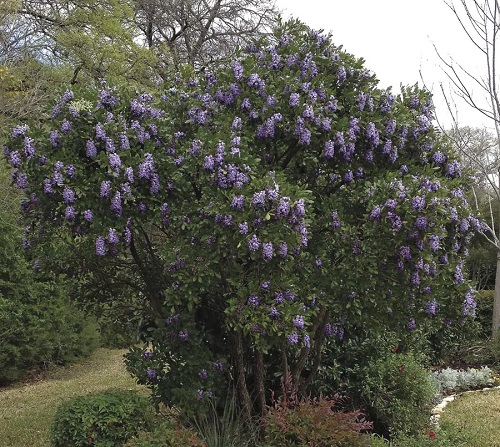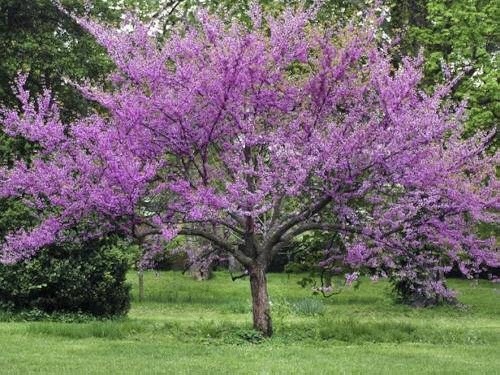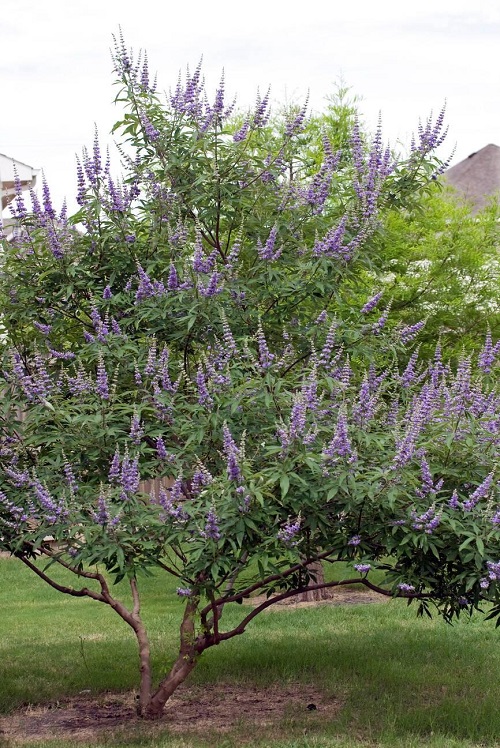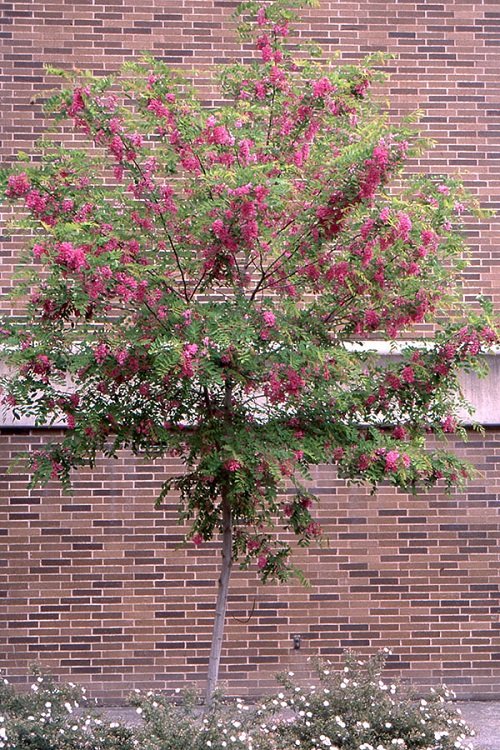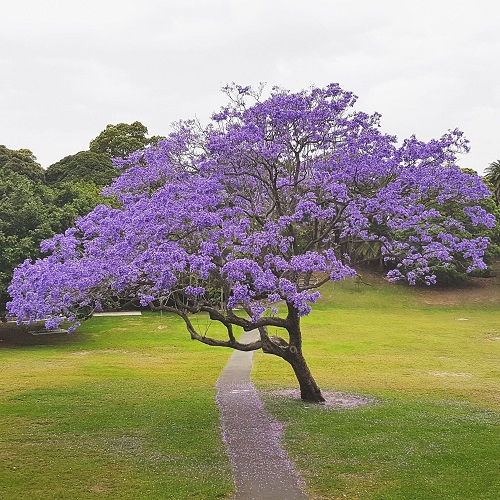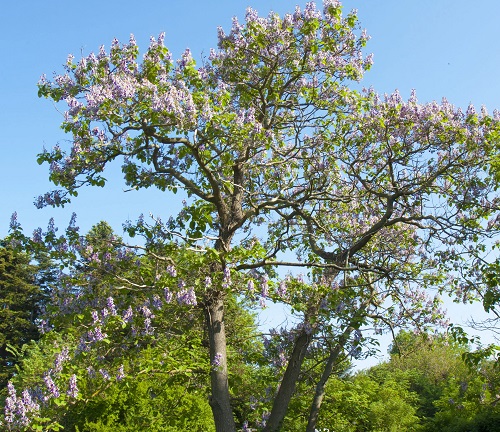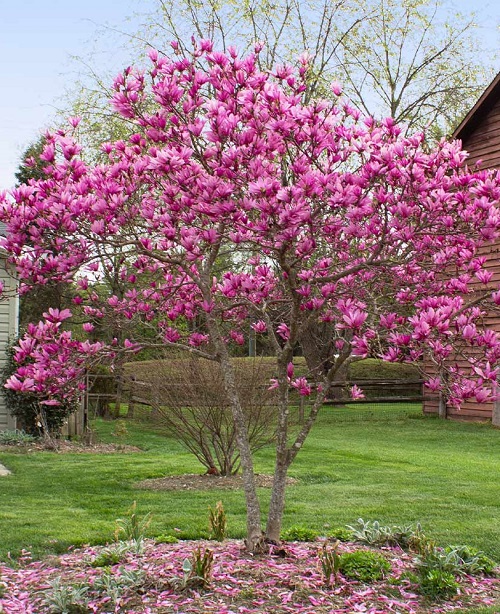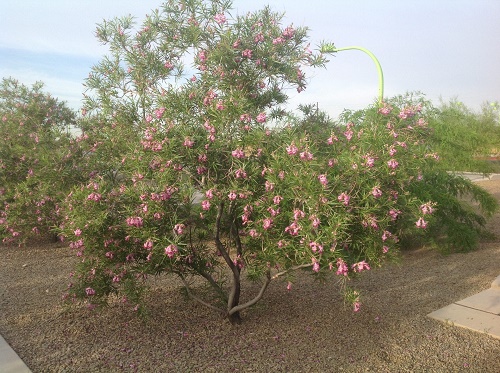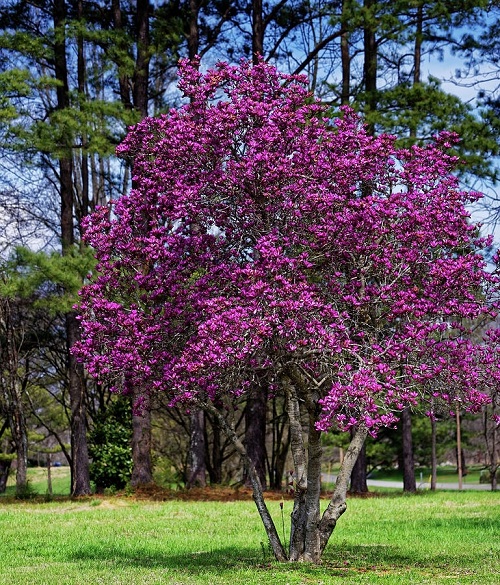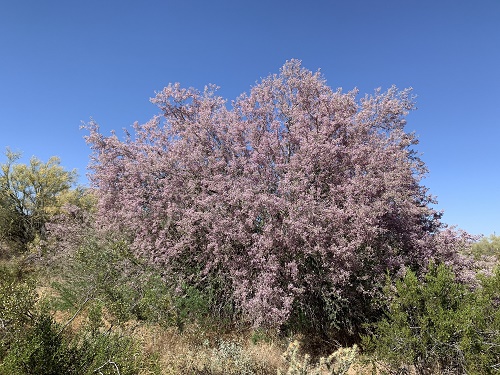Transform your boring garden or backyard into a floral paradise by growing one of these Trees with Purple Flowers!
Want to add a pop of color to your garden? Then, these purple flowering trees should be at the top of your list. They not only offer shade but are also great as focal points with their vibrant blossoms.
Trees with Purple Flowers
1. Texas Mountain Laurel
Botanical Name: Sophora secundiflora
Native to Texas and Mexico, the Texas mountain laurel stands out with its purple wisteria-like flowers. This evergreen tree is drought-tolerant, making it an ideal choice for xeriscaping and arid climates.
2. Eastern Redbud
Botanical Name: Cercis canadensis
Eastern Redbud creates a breathtaking floral display with its splendid purple-pink blooms. It’s a state tree of Oklahoma that can adapt to various soil types quite easily.
3. Chaste Tree
Botanical Name: Vitex agnus-castus
Endemic to Europe and Asia, the chaste tree produces clusters of purple blossoms in the summer. These 4-5 petalled flowers attract bees, butterflies, and songbirds.
4. Crape Myrtle
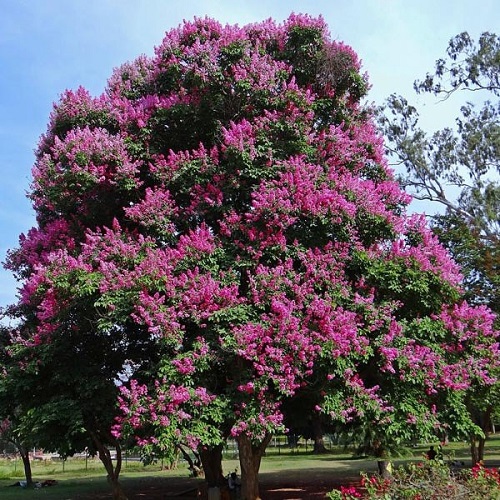
Botanical Name: Lagerstroemia indica
A member of the loosestrife family, the crape myrtle features showy, crepe paper-like blooms and green leaves with a red tinge. Its 1″–1 1/2″ wide flowers are anthocyanin-pigmented with clawed petals.
5. Saucer Magnolia
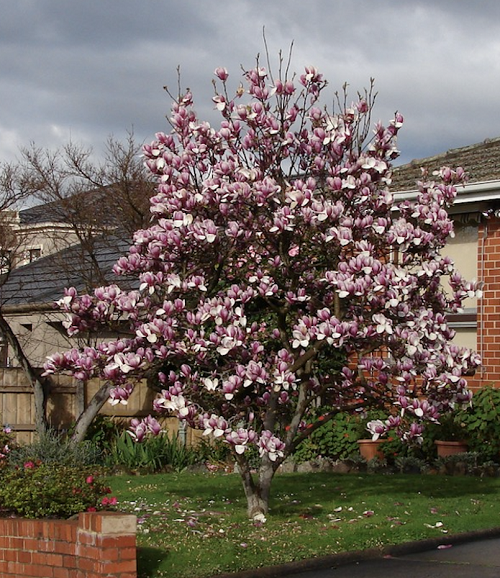
Botanical Name: Magnolia x soulangeana
Saucer magnolia is a small, deciduous tree with stunning tulip-shaped pinkish-purple flowers. Protect this tree from strong winds and late frost that can kill its blooms.
6. Purple Robe Black Locust
Botanical Name: Robinia pseudoacacia ‘Purple Robe’
This cultivar of black locus can grow up to 30-50 feet tall with fragrant lavender flowers and green, pinnate foliage. It loves full sun, partial shade, and well-drained soil to produce lush blooms.
7. Jacaranda
Botanical Name: Jacaranda mimosifolia
Jacaranda is popular for its striking trumpet-shaped, lightly fragrant, lavender-blue blooms. Its feathery, fern-like leaves make this tree a picturesque option for street planting or as a standalone specimen.
8. Empress Tree
Botanical Name: Paulownia tomentosa
The empress tree is prized among gardeners for its vanilla-scented, lavender flowers that resemble those of foxglove. This Chinese native specimen is named after Russian Princess Anna Paulowna.
9. Princess Flower
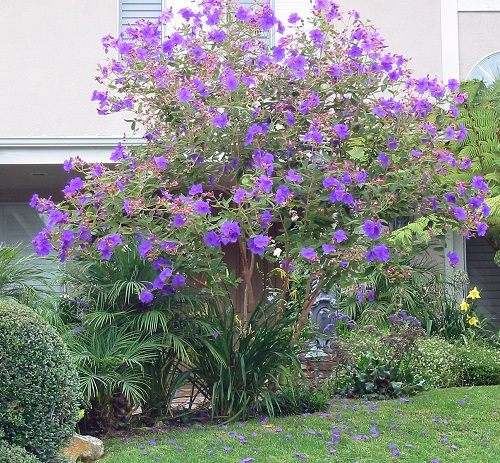
Botanical Name: Tibouchina urvilleana
The princess flower draws eyeballs with its striking royal purple flowers that bloom year-round on terminal panicles. It’s a great option for the mixed shrubbery border and as an accent tree on the patio.
10. Jane Magnolia Tree
Botanical Name: Magnolia ‘Jane’
Adorned with fragrant reddish-purple blooms, the Jane magnolia tree can be a striking focal point for any garden. This compact, low-maintenance tree requires partial to full sun and well-drained soil for best growth.
11. Purple Orchid Tree
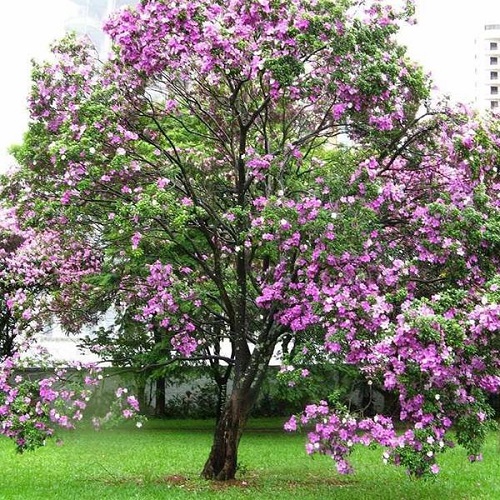
Botanical Name: Bauhinia purpurea
Bring diversity to your garden with the orchid-like, purple blooms of Bauhinia purpurea. It blooms profusely in bright sunlight and moderate humidity.
12. Purple Covey
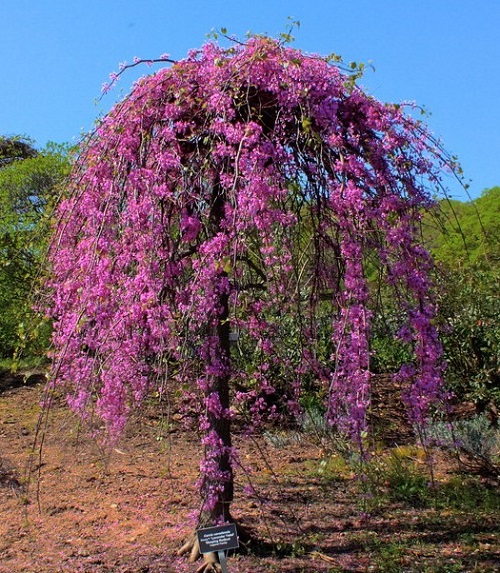
Botanical Name: Cercis canadensis ‘Covey’
This dwarf redbud variety beautifies landscapes with its weeping branches and pea-like rose-purple blossoms in early spring. It’s a perfect focal point in small gardens and an interesting alternative to larger redbud species.
13. Desert Willow
Botanical Name: Chilopsis linearis
Desert willow is a deciduous shrub or multi-trunked small tree native to Southwest America. This drought-tolerant variety produces fragrant trumpet-shaped, pink, lavender, or white blossoms.
14. Lily Magnolia
Botanical Name: Magnolia liliflora
Lily magnolia showcases goblet or lily-like, dark purple flowers in full sun to part shade and slightly acidic, well-drained soil. It fits well in urban and cottage gardens.
15. Hong Kong Orchid
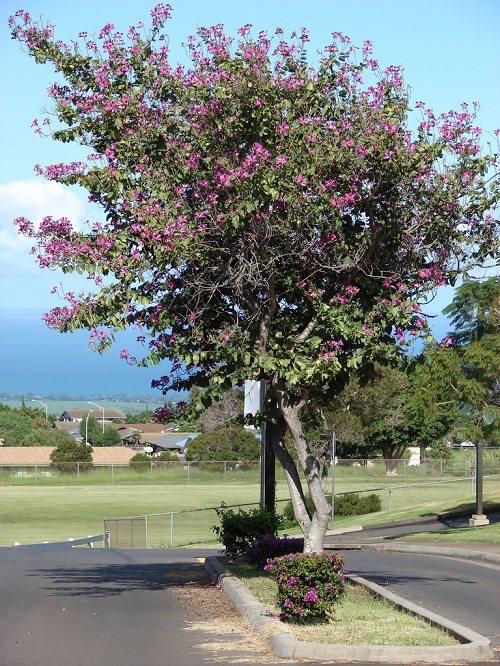
Botanical Name: Bauhinia Blakeana
The Hong Kong orchid is a hybrid semi-evergreen tree that offers orchid-like blooms in striking shades of pink and purple. These blooms can become 5–6 inches in optimal growing conditions.
16. English Lilac
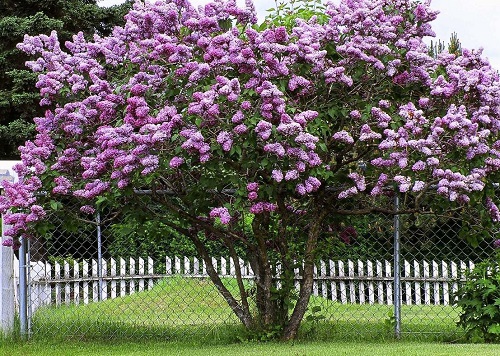
Botanical Name: Syringa vulgaris
The English lilac is admired among gardening enthusiasts for its highly aromatic, purple or lavender-colored flowers. Long-tongued bees, butterflies, and moths often visit its flowers to feed on the nectar.
17. Ironwood
Botanical Name: Olneya tesota
Ironwood boasts pea-shaped, pale pink-to-purple blooms from April to May. This broadleaf evergreen flowering tree is hardy in USDA zones 9–11.
18. Queen’s Crape Myrtle
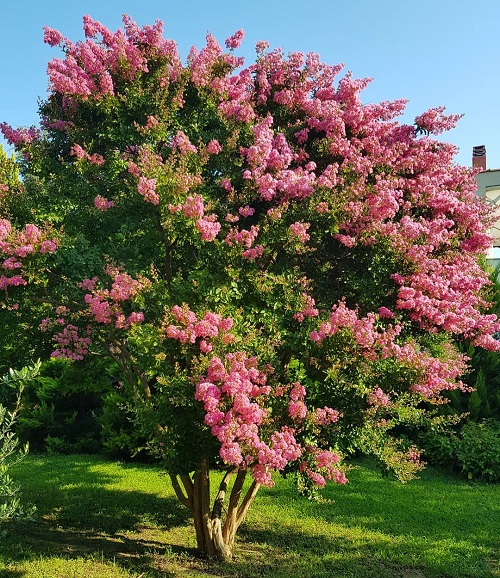
Botanical Name: Lagerstroemia speciosa
Queen’s crape myrtle is valued for its 3-inch wide, pink to lavender blossoms that appear on foot-long, terminal panicles. It thrives quite easily in tropical and subtropical areas.

